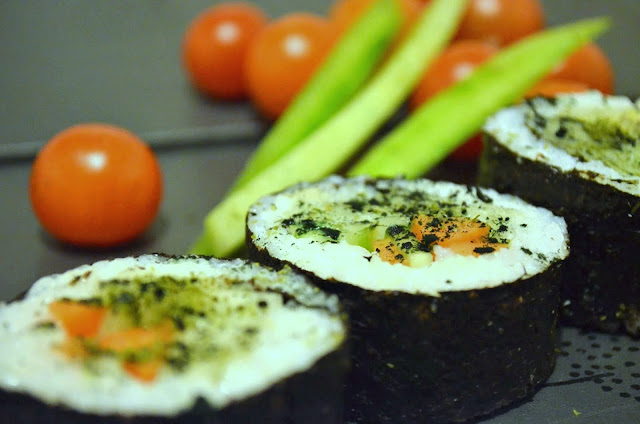It was one of the days when I was craving for kim chi but was not willing to wait for days for the fermentation process to kick in. If I make napa cabbage kim chi, it would take at least 4-5 days before I can sample the food. Quick solution - cucumber kim chi! It's just as tasty and a healthy probiotic food.
In truth, I still had to wait over a day before I could satiate my craving. It wouldn't be kim chi without the fermentation process. Fermentation is needed not only to get the tangy taste but most importantly, to promote good bacteria such as Lactobacillus, which thrives in a salty environment, into our bodies' intestinal tract. This, in turn, promotes a healthy digestive system by breaking down sugars and carbohydrates in the foods to make them more digestible and nutritious for us. The good bacteria also suppresses the growth of harmful bacteria in the intestines. So remember not to skip the fermentation part! The best thing with cucumber kim chi is that the fermentation process is short and you wouldn't want to keep it too long anyway because cucumber loses it's crunchiness by the day.
I prepared one whole large cucumber the evening before by cutting them into short, medium-thickness pieces. Then toss sea salt all over the cucumber pieces. Leave them in a bowl over night. Here's how it looks like the next day. The brine is naturally produced during the fermentation process.
Next, add sliced green onions, a teaspoon of minced garlic, Korean red chili flakes (adjust quantity to taste), a teaspoon of vinegar (Apple Cider Vinegar is recommended), a teaspoon of agave nectar for a hint of sweetness. Mix them all up. It's also good to know that the red chili flakes are packed with Vitamin A, C, iron and no cholesterol.
You can eat some of the cucumber kim chi straight away as a side dish to a meal and pack the rest away in a glass bottle for additional fermentation. Keep the glass bottle in the refrigerator. Eat up within the next two or three days.
If you don't find yourself with time to make this superfood, get the sauerkraut the next time you pop into a korean or asian store.

















